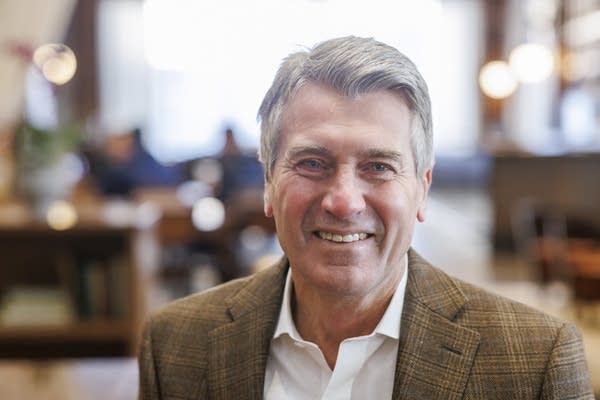Future of Us: After three historic years, what's next for downtown Minneapolis?

Go Deeper.
Create an account or log in to save stories.
Like this?
Thanks for liking this story! We have added it to a list of your favorite stories.
This story is part of a series called “Future of Us,” exploring how a pandemic, a murder and a city on fire have changed us and our path forward.
LaSalle Plaza in downtown Minneapolis is up for auction. Final bids are due Wednesday.
The 30-story office tower built in 1991 is relatively unremarkable, its stone and glass façade as straightforward and down-to-business as the firms that rent space there. Perhaps more remarkable is the foreclosure itself — a distressed property just steps from the former Dayton’s department store that beckoned generations of Minnesotans downtown, and the site of Mary Tyler Moore’s famous hat toss that would symbolize progress for generations more.
Less than five blocks away, another foreclosure. Minnesota’s largest hotel, Hilton Minneapolis, will go up for auction next month. Meanwhile, national retail chains are emptying storefronts and downtown employers are reducing their office footprints.
Turn Up Your Support
MPR News helps you turn down the noise and build shared understanding. Turn up your support for this public resource and keep trusted journalism accessible to all.
Many believe it’s all a sign that downtown is in trouble, seemingly hollowed out by three anxious years of remote work, takeout food, protests and crime. But R.T. Rybak isn’t discouraged.
“It's really important to remember right now that this isn't the first time people have wondered about downtowns,” said Rybak, former Minneapolis mayor and now president and CEO of the Minneapolis Foundation. “I mean, imagine being in cities in the 1950s, early 60s. Freeways being built, suburban shopping centers. Everybody said it's the end of downtowns.”
Cue the “five white guys with their name on a business who walked into the Minneapolis Club and laid out a map and said here's what we're going to do,” Rybak said. Downtown as we’ve known it was born.
Rybak said a similar civic push is needed now — but one that is far more inclusive. He looks to the work the Minneapolis Foundation is doing to bring back Lake Street after parts of it were gutted by riots following the police murder of George Floyd.

“The day after that happened, Lake Street was jammed with people with brooms, sweeping up the mess. And that began an incredible rebuilding. But it didn't happen the old way,” he said. “The old way of rebuilding Lake Street would have been a few of us at foundations mapping out what needed to happen. That's not the way it went. We went in and developed relationships with the community, and now community tables are deciding what happens with the first $10 million. Many millions more are coming and more important, there's a community vision. It really gives me hope that downtown can be that, too.”
But circumstance is already doing some of the shaping.
Rybak said he doesn’t expect many downtown employers to bring employees back full-time, instead asking that they work in person periodically. And that, he believes, will mean a shift toward residential — more condos, more restaurants and entertainment and more park space.
Rybak said he recognizes the transition has and will cause pain for some, but he’s encouraging them to rise up to the challenge.
“Those of us who love cities because it’s the place that welcomes everyone, those of us who recognize that downtown Minneapolis is the place where LGBTQ people came for decades to feel safe when they didn't feel safe in their small town, those of us who recognize that it's a place where people of every income level come — it's not a gated community, it's the living room —we need to hold that up as a value,” Rybak said. “We need to fight for cities because … common ground is worth the fight.”
Listen to the full conversation with R.T. Rybak using the audio player above.
Dear reader,
The trustworthy and factual news you find here at MPR News relies on the generosity of readers like you.
Your donation ensures that our journalism remains available to all, connecting communities and facilitating better conversations for everyone.
Will you make a gift today to help keep this trusted new source accessible to all?



